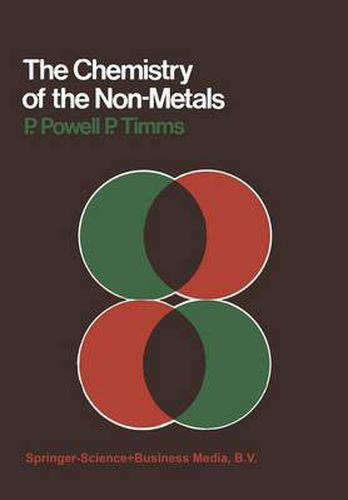Readings Newsletter
Become a Readings Member to make your shopping experience even easier.
Sign in or sign up for free!
You’re not far away from qualifying for FREE standard shipping within Australia
You’ve qualified for FREE standard shipping within Australia
The cart is loading…






This title is printed to order. This book may have been self-published. If so, we cannot guarantee the quality of the content. In the main most books will have gone through the editing process however some may not. We therefore suggest that you be aware of this before ordering this book. If in doubt check either the author or publisher’s details as we are unable to accept any returns unless they are faulty. Please contact us if you have any questions.
This book is a new attempt to interrelate the chemistry of the non-metals. In the early chapters, simple compounds of the non-metals with the halogens, hydrogen, and oxygen are surveyed, permitting a large area of chemistry to be discussed without the burden of too many facts. The structural relationships in the elemental forms of the non-metals are then used as an introduction to the catenated compounds, including the boron hydrides. In the concluding chapter, selected heteronuclear chain, ring, and cage compounds are con sidered. In some chapters, we have thought it useful to outline important features of a topic in relation to chemical theory, before giving a more detailed ac count of the chemistry of individual elements. The book is certainly not comprehensive and the bias in the material selected probably reflects our interest in volatile, covalent non-metal compounds. Suggestions for furt her reading are presented in two ways. A selected bibliography lists general textbooks which relate to much of our subject matter. References in the text point to review articles and to a few original papers which we consider to be of special interest. Although there are few difficult concepts in the text, the treatment may be appreciated most by students with some previous exposure to a Group by Group approach to non-metal chemistry. We have assumed an elementary knowledge of chemical periodicity, bonding theory, thermodynamics, and spectroscopic methods of structure determination.
$9.00 standard shipping within Australia
FREE standard shipping within Australia for orders over $100.00
Express & International shipping calculated at checkout
This title is printed to order. This book may have been self-published. If so, we cannot guarantee the quality of the content. In the main most books will have gone through the editing process however some may not. We therefore suggest that you be aware of this before ordering this book. If in doubt check either the author or publisher’s details as we are unable to accept any returns unless they are faulty. Please contact us if you have any questions.
This book is a new attempt to interrelate the chemistry of the non-metals. In the early chapters, simple compounds of the non-metals with the halogens, hydrogen, and oxygen are surveyed, permitting a large area of chemistry to be discussed without the burden of too many facts. The structural relationships in the elemental forms of the non-metals are then used as an introduction to the catenated compounds, including the boron hydrides. In the concluding chapter, selected heteronuclear chain, ring, and cage compounds are con sidered. In some chapters, we have thought it useful to outline important features of a topic in relation to chemical theory, before giving a more detailed ac count of the chemistry of individual elements. The book is certainly not comprehensive and the bias in the material selected probably reflects our interest in volatile, covalent non-metal compounds. Suggestions for furt her reading are presented in two ways. A selected bibliography lists general textbooks which relate to much of our subject matter. References in the text point to review articles and to a few original papers which we consider to be of special interest. Although there are few difficult concepts in the text, the treatment may be appreciated most by students with some previous exposure to a Group by Group approach to non-metal chemistry. We have assumed an elementary knowledge of chemical periodicity, bonding theory, thermodynamics, and spectroscopic methods of structure determination.